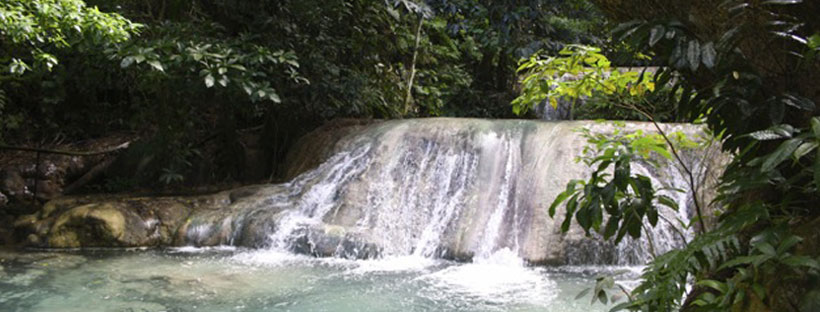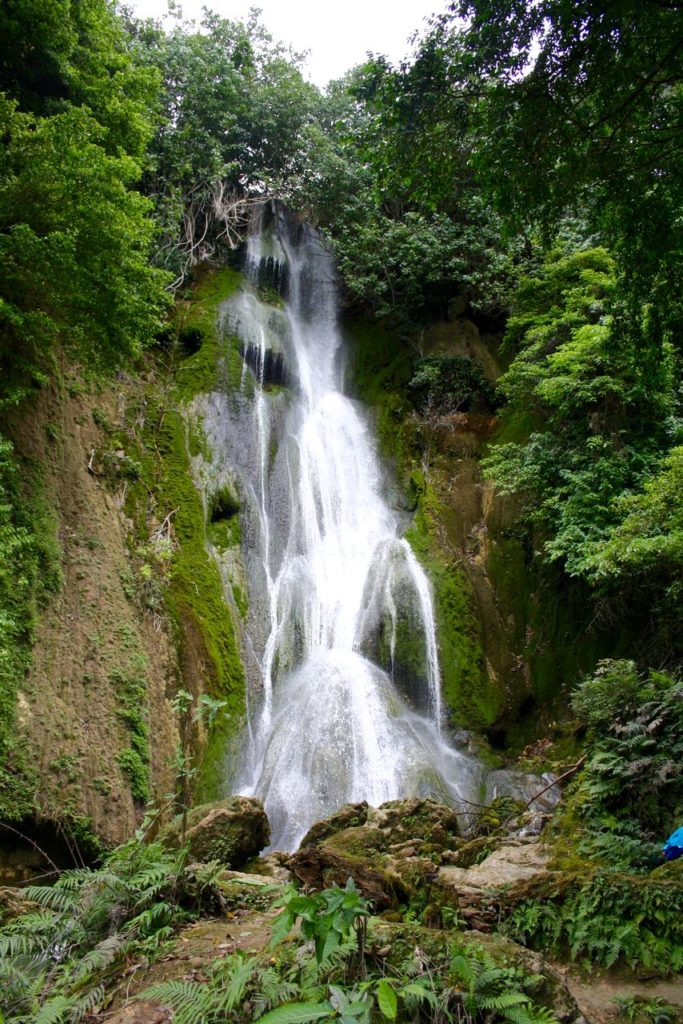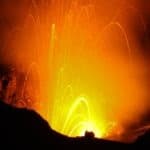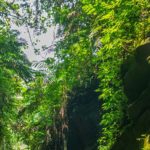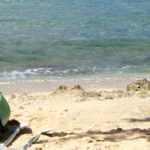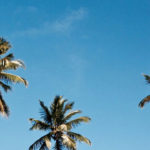Mele Cascades are dramatic and great fun. They’re no Niagara or Iguaçu, but then you can’t swim in either of those (well, maybe just the once)
“Is this it? Are these the waterfalls?” Kia asked after about 10 minutes of walking.
“Can’t be,” I replied, not convinced.
“But the driver said it’s just a few minutes to the top…”
It’s not that the running stream gently rolling down the hillside through lush gardens and past creaking bamboo trees wasn’t pretty, but it was hardly the dramatic 30-metre high waterfalls we had read about.
“Maybe it means it falls 35 metres gradually, you know, over some distance, like this stream?” Kia suggested.
“I’m sure it can’t be – let’s keep going.” My confident tone obscured my doubts. Luckily, I was proven right.
The gardens below the Mele Cascades, woodland and flowing streams are indeed very beautiful and arguably worth a visit in their own right, but that’s not what we’d come for. We kept walking and climbing and after a few more minutes we could hear the clamour and exclamations of people clearly wowed by something spectacular.
We pushed on and, with the aid of ropes and the odd stepping stone, criss-crossed the stream which was now widening and fast becoming a river. Around one more twist in its flow we saw what we’d come for and were not disappointed.
The Mele Cascades are dramatic. They’re no Niagara or Iguaçu, but then you can’t swim in either of those (well, maybe just the once). Splashing around in the clear pools at the bottom while thousands of litres of water come thundering down is exhilarating. Climbing up onto the rocks directly beneath the falling water felt like the whole world was roaring down on me – without the impending doomsday. It also gave me the chance to channel my inner Peter Andre albeit without the six-pack!
At some point, while I was frolicking in the falls like a young boy in a back garden splash pool, I mindlessly backed into the falls and found myself in a small cave hidden behind one of the outlets. I had no idea it was there so was surprised to suddenly find myself with two other visitors concealed behind a wall of roaring water in a cave just large enough to hold the three of us. Another great find.
If you’re travelling to Vanuatu, you’ll have to enter via Port Vila on the country’s main island, Efate. Most visitors stay at least a few nights on the island before moving on. I suggest you do the same, but while there make the Cascades a priority. The temptation is to spend your time lazing on the white sand beaches and swimming, snorkelling and diving the turquoise waters, but do take the time to experience this little gem – it’s great fun.
Mele Cascades: The essentials
When: We’re here in mid-August and it seems pretty perfect to me. The guidebooks suggest that July through to October is the best time for westerners to visit. We’re also told that at other times of the year it can get either too hot or too wet. Currently, most days are clear and there are cool breezes coming in from the west. Further inland the wind drops and it gets hotter and more humid. Likewise on the western shores, you’ll be more sheltered from the ocean winds. If you’d prefer fewer tourists during your time on the island then visit during September after the Australian school holiday.
How: The falls are about 10 kilometers north of Port Vila. In town take a local bus with a ‘B’ at the start of its number plate and tell the driver you’d like to visit Mele Cascades. It should cost you around 350vt from the town centre or 500vt from Pango which is where we were staying. Our driver waited for us in the car park and took us back for the same price. The driver may make you an offer to visit some of the other nearby attractions which include the Tanna Coffee Factory and the Secret Gardens which may save you time and money.
Port Vila has an international airport with regular flights to Australian east coast airports (book via skyscanner.net).
